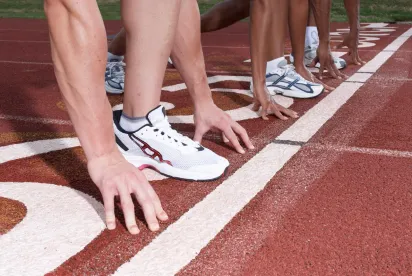In November 2016, the launch of a new athletics team event, Nitro Athletics, was announced. The inaugural event will be held in Melbourne on three evenings in February 2017 and promises to ‘revolutionise’ track and field. Fronted by global superstar Usain Bolt, six teams will take part: the ‘Bolt All-Stars’, Australia, England, New Zealand, Japan and China featuring 24 athletes (12 women and 12 men) in total. The teams will compete in 12 events on each night of the competition with the events being chosen to test the ‘athlete’s ability to apply speed and power, technique, endurance and team strategy’.
It is clear that Nitro Athletics is aiming to be a different type of athletics event and that it is aimed at a different type of athletics audience. Indeed, Nitro Athletics’ website states that it is ambitious and that it is ‘aiming to recondition the way fans view competitive athletics in order to increase commercial success and support the future of Athletics beyond the finish line’. It is also clear that, in the context of, amongst other things,: (A) its recent corruption scandal, (B) the extended ban on its Russian athletes and other doping scandals, (C) the loss of its key sponsor, Adidas, and (D) the IOC’s Agenda 2020 that will introduce an event-based programme over the traditional sport-based programme, athletics has urgently needed to find a way to re-engage and grow its existing fan base, regain public trust and increase the commercial attractiveness of the sport.
However, what is surprising is the source of this innovation. True, Bolt is fronting. But the brains behind the team event are Athletics Australia supported by the Australian Government. Why is this surprising?
First, International Federations typically fiercely guard their international competition programme and, by their constitutions or rules, require their member associations (and in turn their athletes/players) to only participate in competitions that are organised or sanctioned by them. In doing so, the relevant governing body is able to ensure that a harmonised set of rules (including technical, anti-doping and disciplinary rules) apply to each competition and that they retain control of the commercial rights of each event. Therefore while you might expect an International Federation to experiment with novel concepts or events (see for example the International Triathlon Union’s successful mixed team relay concept), it is unusual to see a member association doing so.
Second, Athletics Australia has openly stated that they ‘have a long-term vision for Nitro Athletics to be expanded into a global competition series of events at selected international locations’. If such a global series were to be launched, this would clearly be in direct conflict with the typical International Federation position set out above. However, the IAAF has recently expressed their support for Nitro Athletics with Seb Coe being quoted as saying ‘We need brave, bold ideas that engage fans in events… Nitro Athletics is a great example of what can be done and what needs to be done to revolutionise who we present our sport and how our fans connect with the sport and the athletes’. Such support from an International Federation for an event being organised out with its control is unprecedented. This is particularly so given IAAF is not listed as a partner or a supporter on Nitro Athletics website and therefore it does not appear likely that it will benefit commercially from the event (though they or the Oceania Area Association may granted Athletics Australia a permit to run the event, the terms of which are unknown).
Historically, where member associations, continental confederations or private entities have sought to devise novel events out with the International Federation’s calendar and control they have been deemed ‘breakaway leagues’. Breakaway leagues have caused significant tension and dispute in a number of sports including Basketball (FIBA’s Basketball Champions League), Showjumping (Global Champions League) and (potentially) Football (possible European breakaway league).
Arguably, if Nitro Athletics is a success, the IAAF’s support for the event could encourage and embolden entities distinct from the traditional International Federations in other sports to consider putting their monies behind novel sporting competition formats. For the fans and the athletes, a choice of events, increased engagement and a new look to their sport may be welcomed. For the International Federations, rival events may continue to be a cause for concern. This is particularly the case for federations who are struggling to establish or maintain their fan base, or those without sufficient capital to invest heavily in events or event production.



 />i
/>i

